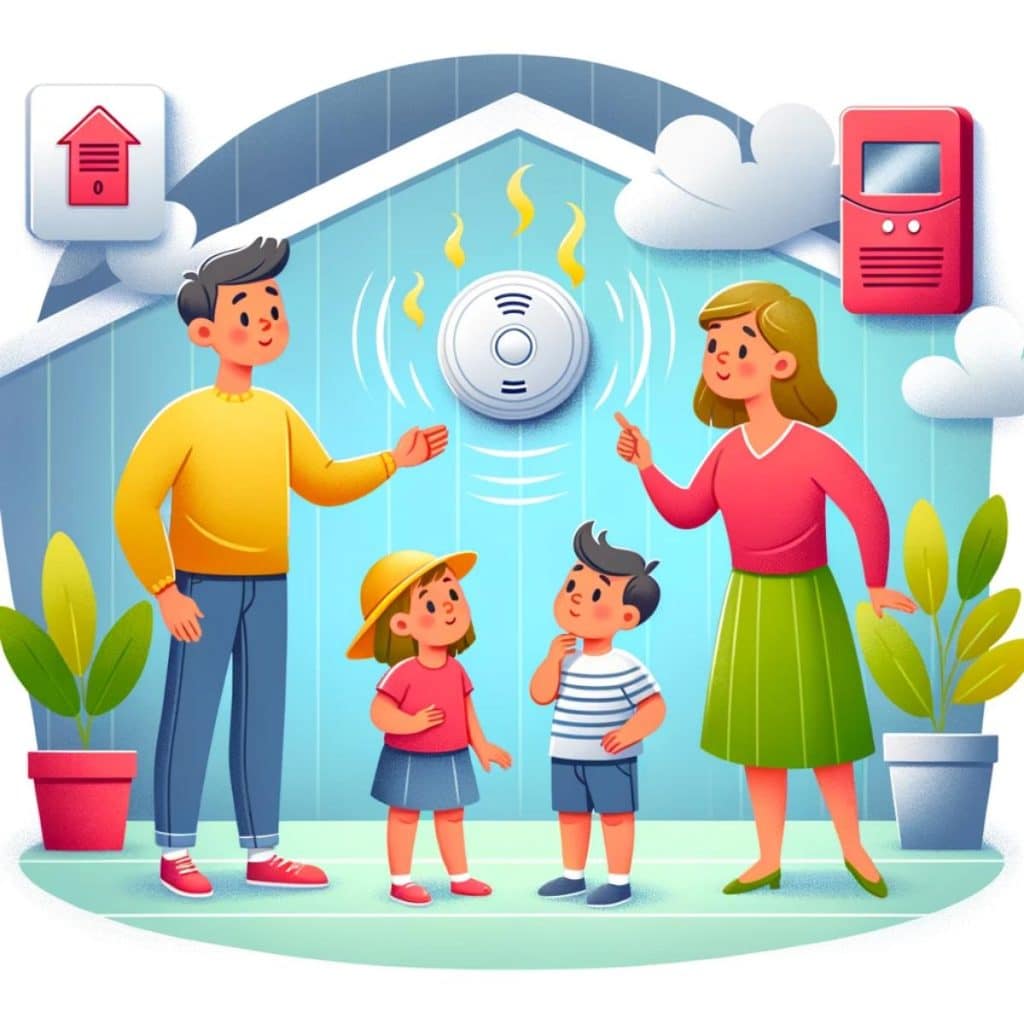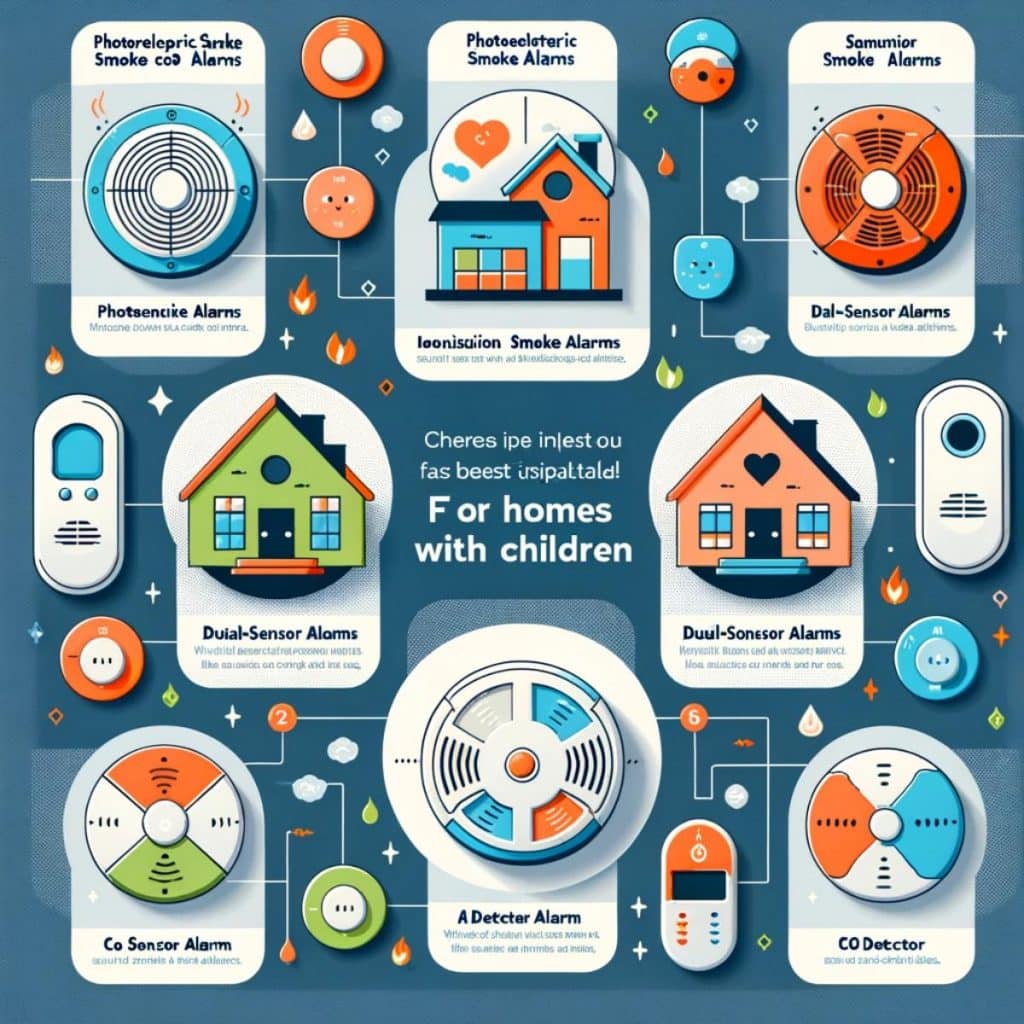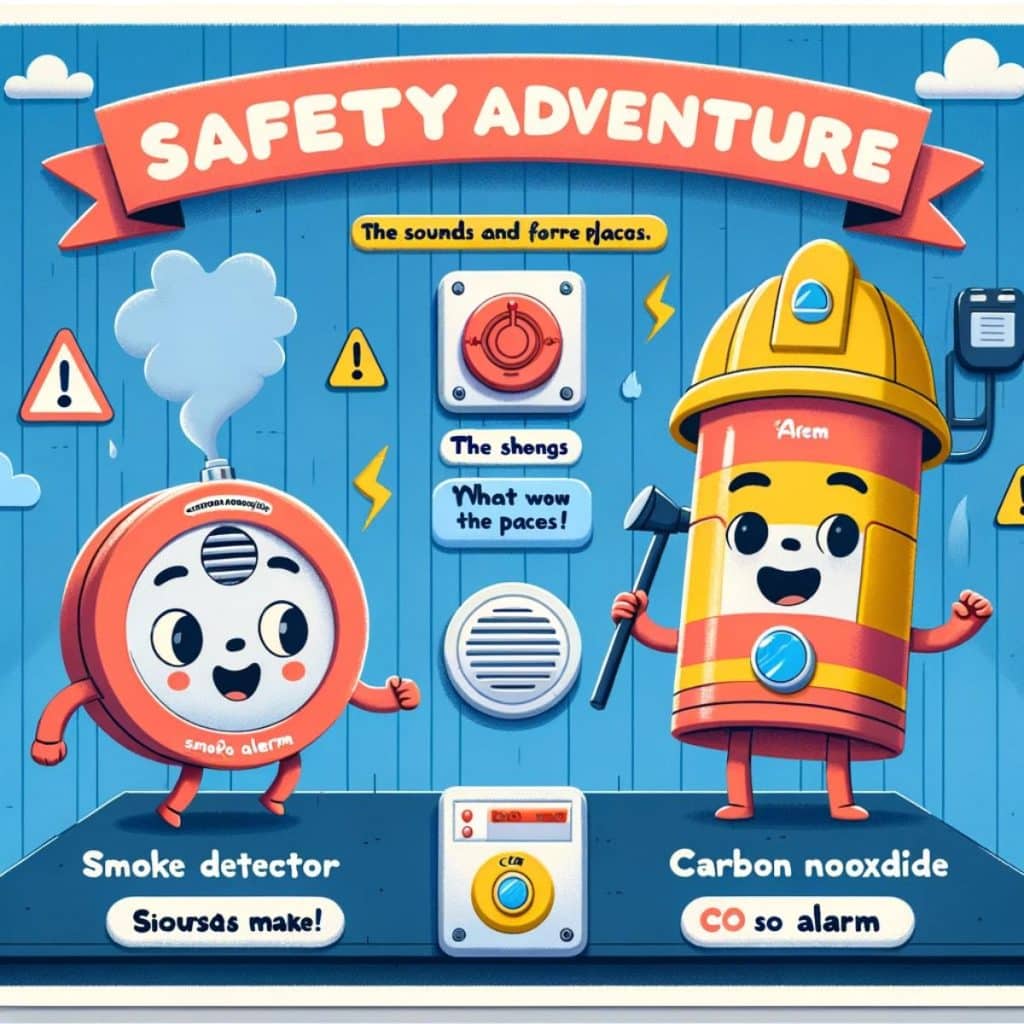Kid-Friendly Smoke and CO Alarms: A Comprehensive Guide
Ensuring the safety of your family, especially kids, from the dangers of smoke and carbon monoxide (CO) is a top priority for any homeowner. This comprehensive guide provides you with all the necessary information about kid-friendly smoke and CO alarms, helping you make informed decisions for the safety and well-being of your loved ones.

Key Takeaways:
- Importance of having both smoke and CO alarms in your home.
- Advantages of smart alarms over traditional ones.
- Installation and maintenance tips for maximum efficiency.
- Integration of alarms with home automation systems for enhanced safety.
Contents
Understanding the Basics of Smoke and CO Alarms
Smoke and CO alarms are essential for early detection of fires and carbon monoxide leaks, providing crucial time for evacuation and prevention of tragic incidents.
Traditional vs. Smart Alarms
- Traditional Alarms: Basic models that sound an alarm when smoke or CO is detected.
- Smart Alarms: Provide additional features like remote notifications and integration with smart home systems.
Importance of Kid-Friendly Features
- Alarms with voice alerts and user-friendly interfaces are more effective for homes with children.
- Smart features like remote notifications keep you informed even when away from home.
Educating Kids About Fire Safety
Fire Drills and Alarm Awareness
- Conduct regular fire drills.
- Teach kids what the alarms sound like and the proper response.
Resources for Kids
- Interactive games and videos can be great tools for educating children about fire safety.
For engaging fire safety education for kids, watch this video:
For a comprehensive guide on selecting and maintaining your smoke and CO alarms
Choosing the Right Smoke and CO Alarm for Your Home
Types of Alarms
- Photoelectric Smoke Alarms: Detect smoldering fires effectively.
- Ionization Smoke Alarms: Quickly recognize fast flaming fires.
- Dual-Sensor Alarms: Combine both photoelectric and ionization technologies for comprehensive coverage.
- CO Alarms: Specifically designed to detect carbon monoxide gas.
Smart Alarm Features
- Remote Notifications: Alerts sent to your smartphone.
- Inter-connectivity: Linking multiple alarms for synchronized alerts.
- Voice Alerts: User-friendly voice notifications, especially useful for children.

Installation and Maintenance
Proper installation and regular maintenance are critical for the effective functioning of smoke and CO alarms.
Installation Tips
- Placement: Install smoke alarms in every bedroom, outside sleeping areas, and on every level of the home, including the basement.
- Height: Smoke alarms should be mounted on the ceiling or high on a wall.
Maintenance and Testing
- Test Regularly: Test alarms monthly by pressing the test button.
- Battery Replacement: Replace batteries at least once a year, or as needed for smart alarms.
- Cleaning: Keep alarms free from dust and debris.
Smart Alarm Integration and Safety Tips
Integrating smart alarms with home automation systems can significantly enhance your home’s safety.
Smart Home Integration
- Control and monitor your alarms through a central smart home system.
- Receive alerts and notifications on your smartphone.
Safety Tips for Homes with Kids
- Educate children about the sound of alarms and what to do when they hear one.
- Conduct regular fire drills to ensure everyone knows how to react in an emergency.

Purchasing Guide for Smoke and CO Alarms
When purchasing smoke and CO alarms, consider the following factors:
What to Look For
- Type of Alarm: Choose between photoelectric, ionization, dual-sensor, or CO alarms based on your needs.
- Features: Look for smart features like connectivity and voice alerts for added convenience and safety.
- Certification: Ensure the alarm meets safety standards and certifications.
Price Range and Where to Buy
- Smoke and CO alarms are available at a variety of price points.
- Purchase from reputable retailers or directly from manufacturers.
Selected Product Recommendations
- First Alert SCO5CN Combination Smoke and CO Alarm, Battery Operated.
- Kidde Battery Operated Combination Smoke and CO Alarm with Voice Alert.
Watch this video for more insights:
Advanced Features and Considerations for Kid-Friendly Alarms
As we delve deeper into the world of smoke and CO alarms, it’s important to consider advanced features that can enhance safety, especially in homes with children.
Smart Alarm Capabilities
- Voice Alerts: Alarms with voice alerts can be more effective in waking children than traditional alarms.
- Mobile Integration: Get real-time alerts on your smartphone, keeping you informed even when you’re away.
Selecting the Right Alarm for Different Areas
- Kitchen: Opt for photoelectric alarms to reduce false alarms from cooking.
- Bedrooms: Use alarms with voice alerts for better response in children.
The Role of CO Detectors
- Placement: Install CO detectors on every level of the home, including the basement and near sleeping areas.
- Understanding CO Levels: Educate yourself on the symptoms of CO poisoning and the importance of quick response.
Enhanced Safety with Interconnectivity
- Whole-Home Safety: When one alarm sounds, all interconnected alarms go off, ensuring you’re alerted no matter where you are in the home.
- Integration with Home Automation: Connect your alarms with smart home systems for centralized control and monitoring.
The Future of Home Safety
- Technological Advancements: Look for alarms with the latest features like AI integration and air quality monitoring.
- Staying Updated: Keep abreast of new innovations in smoke and CO detection to ensure the highest level of safety.
Frequently Asked Questions
- How often should I test my smoke and CO alarms?
- Test monthly and ensure batteries are replaced as needed.
- Can smoke and CO alarms be interconnected?
- Yes, many models offer this feature for enhanced safety.
- Are there special smoke alarms for children’s rooms?
- Yes, alarms with voice alerts are recommended for children’s rooms.
Maintaining Your Alarms for Longevity
Regular Check-Ups
- Monthly Testing: Use the test button to check the functionality.
- Battery Replacement: Even with hardwired models, replace backup batteries annually.
Cleaning and Upkeep
- Dust and Debris: Regularly clean your alarms to ensure proper functioning.
- End-of-Life: Replace smoke alarms every 10 years and CO alarms as per manufacturer recommendations.
Lastly, learn about the installation of smoke and CO alarms in this informative video:


